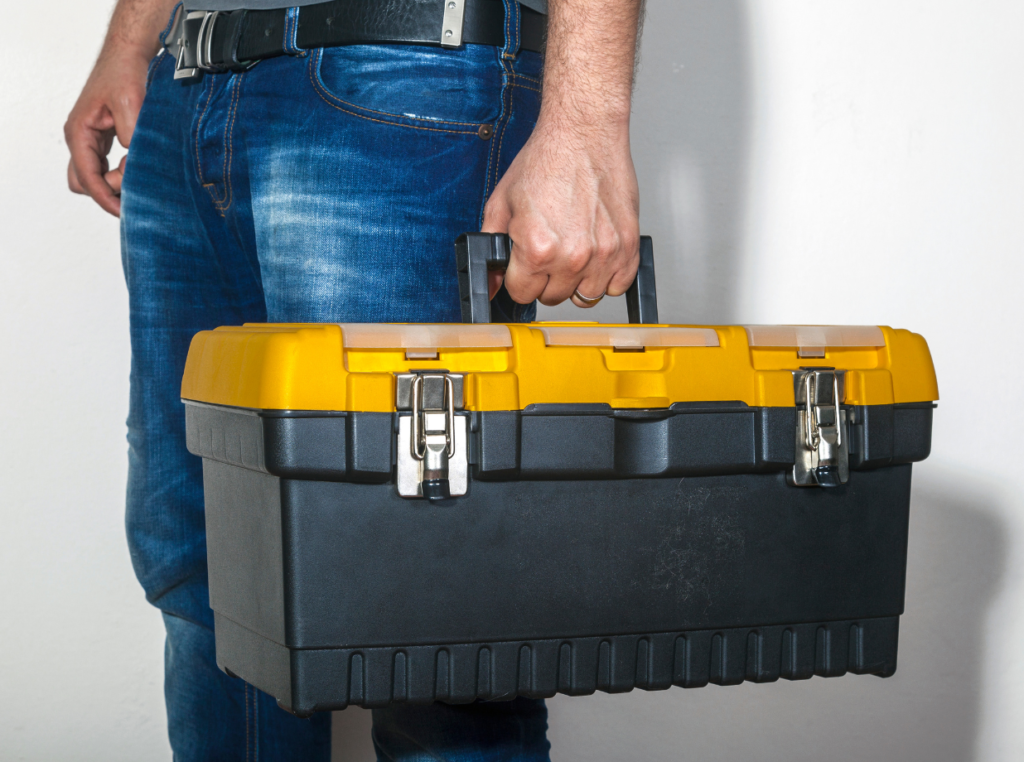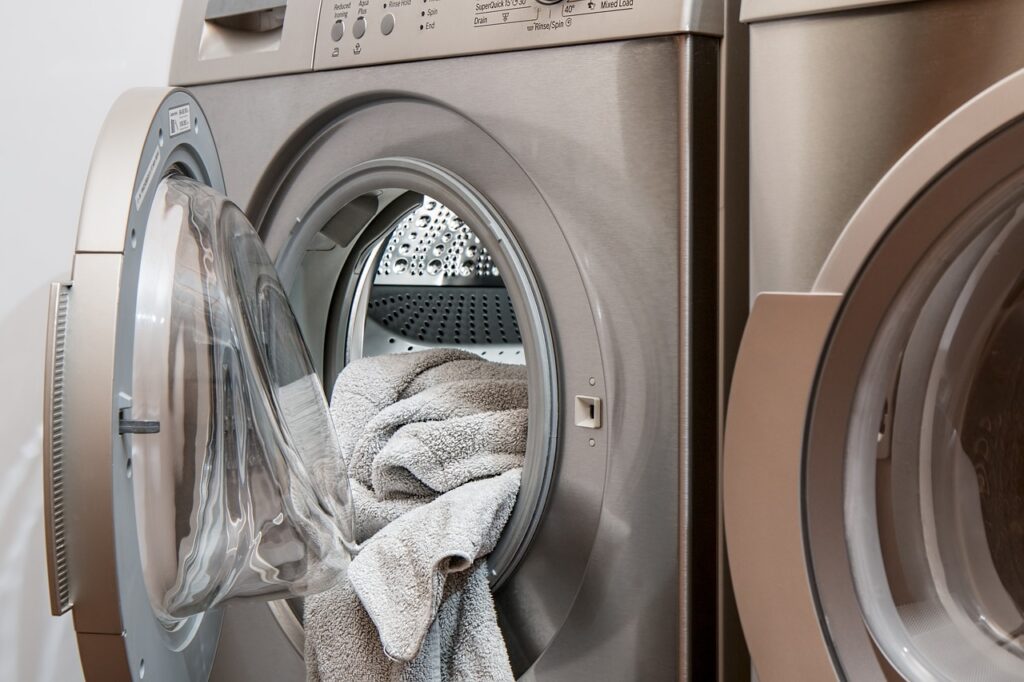Few household appliances are as essential—and as taken for granted—as the trusty clothes dryer. But what do you do when your once-quiet machine in starts making alarming noises? Understanding the source of these sounds can be the key to restoring peace and extending the life of your dryer. We’ll walk you through common dryer noise culprits and provide step-by-step solutions to fix them, ensuring your laundry days remain hassle-free. Remember, a well-functioning dryer isn’t just convenient—it’s a cornerstone of efficient home management.
As the saying goes, “A stitch in time saves nine.” The same wisdom applies to your dryer. Addressing minor issues early can prevent costly repairs later.
Understanding Your Dryer: Common Noise Culprits
Dryers are essential household appliances, but occasionally, they might start making strange noises that leave you puzzled. Understanding what causes these noises can save you time, money, and frustration. Let’s explore the common noise culprits in a dryer so you can quickly zero in on the problem and fix it.
First and foremost, it’s important to distinguish between the different types of noises your dryer might make. Each noise can point to a specific issue. Here are the most typical sounds:
- Rattling and Thumping: Often caused by loose parts or items caught in the drum.
- Squeaks and Squeals: Usually indicate worn-out bearings that need attention.
- Grinding Noises: Could be a sign that the drum roller needs to be replaced.
- Buzzing Sounds: Hint at potential problems with the motor or fan.
- Scraping and Metal-on-Metal: Often related to issues with the drum seal.
20% of dryer issues are noise-related
Rattling and Thumping: Identifying Loose Parts
If your dryer sounds like it’s hosting a tambourine practice session, the culprit might be loose parts. Start by inspecting the drum, your dryer’s central component. Over time, even the sturdiest parts can come loose or wear out, resulting in persistent thumping noises. This sound often signals that items like socks, washcloths, or even heavy objects have gotten caught in the drum. These foreign objects can disrupt the smooth operation of the dryer, banging around with each rotation.
Begin by opening up the dryer and checking the drum seal. A worn or damaged seal might be causing clothes to snag, which can lead to thumping noises. If you notice any signs of wear and tear, it’s time to replace the seal.
Another likely suspect is the drive belt. A frayed or stretched belt can’t maintain the necessary tension, leading to erratic drum movements and thumping sounds. Examine the belt closely for any signs of damage. If you are not comfortable replacing the belt yourself, it’s best to contact an appliance expert for assistance.
Finally, don’t overlook the drum rollers. Over time, these critical components can become flattened or worn out, causing the drum to wobble as it spins. To test the rollers, manually rotate the drum. If you feel any resistance or wobbling, it’s likely time for a replacement. Remember, for the best results, replace all the drum rollers simultaneously to ensure even wear.
40% of dryer noise complaints are due to worn drum bearings
Squeaks and Squeals: Addressing Worn Out Bearings
One of the most common culprits behind those high-pitched squeaks is worn-out bearings. Bearings are integral to ensuring smooth rotation of the drum. When they wear out, they can cause friction that results in those unpleasant noises.
Spotting Worn Bearings: Listen closely to the sound. If it’s more of a constant squeak rather than intermittent, chances are high that the bearings need attention. Another telltale sign is if the squeaking intensifies when the dryer is heavily loaded.
Quick Fixes: A little lubrication can sometimes mask the noise temporarily. However, this is more of a band-aid solution. For a longer-lasting fix, you’ll need to replace the bearings.
Here’s a step-by-step guide:
- Unplug the dryer and ensure it’s cool before starting.
- Remove the front panel to gain access to the drum.
- Locate the bearing: It’s usually situated at the back of the drum.
- Remove the old bearing carefully and replace it with the new one.
- Reassemble the dryer, ensuring all parts are securely in place.
Grinding Noises: When to Replace the Drum Roller
Grinding noises in your dryer can indicate that it’s time to replace the drum roller. The drum roller supports the drum as it rotates, and over time, it can wear out or become flattened, leading to a distinctive grinding sound. If ignored, this issue can escalate, potentially causing other components to fail.
To determine if the drum roller is the culprit, you’ll need to open up your dryer. Begin by unplugging the appliance for safety, then remove the front or rear panel, depending on your dryer’s model. Once you have access to the drum, inspect the rollers for signs of wear or damage. Look for flattening, cracks, or a wobbling motion when you manually spin the drum.
If you observe any damage, it’s best to replace all the drum rollers simultaneously. This proactive step ensures even wear and prevents future issues, giving your dryer a longer lifespan. Additionally, check the drum roller axles to ensure they don’t wobble or show signs of wear. If they do, replacing the axles alongside the rollers is recommended for smooth operation.
Buzzing Sounds: Checking the Motor and Fan
If your dryer is humming or buzzing, your first course of action should be to focus on the motor and fan. These components are crucial for its operation, and a problem here can be notably noisy. Begin by unplugging your dryer to ensure safety.
Inspect the Motor: The motor drives both the drum and the blower wheel. Lint, dust, or debris can sometimes clog the motor, leading to a buzzing sound. Check for any visible blockages and clean them out with a brush or vacuum if necessary. If the motor itself seems blocked or too hot, you might need to replace it. Motor replacement, however, can be quite complex and might require professional assistance.
Check the Blower Wheel: The blower wheel circulates air through the dryer drum and out the exhaust vent. If it’s not spinning freely or is obstructed, you may hear a buzzing sound. Open the dryer’s front panel to access the blower wheel. Look for any obstructions like lint or small items that may have slipped past the lint trap. Ensure the wheel is properly aligned and not damaged. A wobbly or misaligned blower wheel will need to be fixed or replaced.
5% of dryer noise complaints are due to motor problems
Scraping and Metal-on-Metal: Fixing the Drum Seal
If you hear scraping or metal-on-metal sounds coming from your dryer, it’s crucial to take action immediately. These noises often indicate an issue with the drum seal, a component that helps prevent clothes from getting caught between the drum and the dryer tub. Over time, the drum seal can wear out or become damaged, leading to those unsettling noises and also potentially causing damage to your clothing.
To inspect the drum seal, you’ll need to:
- Unplug the dryer for safety.
- Remove the front or back panel of the dryer, depending on your model.
- Locate the drum seal, which is usually a felt or rubber strip around the edge of the drum.
- Examine the seal for signs of wear, such as fraying, tearing, or missing sections.
If you notice any damage, replacing the drum seal is the best course of action. Here’s a simplified guide to help you:
- Purchase a Replacement Seal: Make sure to get a seal compatible with your dryer model.
- Remove the Old Seal: Carefully peel off the old seal. You might need to use a scraper to remove any leftover adhesive.
- Clean the Area: Wipe down the edge of the drum where the seal was located to ensure a clean, smooth surface for the new seal.
- Apply the New Seal: Follow the manufacturer’s instructions to apply adhesive and attach the new seal. Make sure it is securely in place.
- Reassemble the Dryer: Put the panels back on, plug in the dryer, and run a test cycle to ensure the noise is gone.
Simple DIY Tips to Quiet a Noisy Dryer
Some dryer noises can often be managed with a bit of DIY tinkering. Here are a few simple tips to help quiet your noisy dryer:
1. Check for Loose Objects
Before diving into the mechanics, inspect the drum for any loose items like coins, buttons, or small fabric pieces. These can easily create rattling or clunking sounds. Removing them might be all you need to do to restore peace to your laundry room.
2. Verify the Level
Ensure your dryer is standing on a level surface. An unbalanced machine can produce thumping or rattling sounds. Use a spirit level to check across both the top front edge and top side edge. Adjust the leveling legs as needed, tightening the lock nuts to secure them in place.
3. Inspect the Drive Belt
If your dryer makes a thumping noise, the drive belt might be stretched or worn out. This belt wraps around the drum, the motor pulley, and the idler pulley. Look for signs of wear or fraying. If you notice any issues, you might need to replace the belt, a task best left to those comfortable with appliance repairs or an expert.
4. Examine Drum Glides
Worn-out drum glides can lead to a dry, squeaky sound as the drum rotates. These glides provide smooth movement between the drum and the front panel. If they appear worn or damaged, replacing them can often quiet the dryer.
5. Tighten Loose Screws and Panels
Loose screws or panels can also cause rattling and banging sounds. Using a screwdriver, go around your dryer to tighten any loose hardware. Pay special attention to the lint trap housing and the front and back panels, which may vibrate during use.
6. Regular Lubrication
Bearings and pulleys in your dryer require lubrication to operate smoothly. Applying a high-temperature lubricant to these components can reduce squeaks and ensure smoother operation.
7. Clean the Lint Trap and Vent
Clogged lint traps or vents can restrict airflow, causing your dryer to overheat and make buzzing or humming noises. Regularly clean the lint trap before each load and make a habit of checking and cleaning your dryer vent every few months.
By following these simple steps, you’ll likely be able to quiet most of the common noises your dryer makes, keeping it running smoothly and extending its lifespan. A little maintenance goes a long way!
When to Call a Professional: Recognizing the Limits of DIY

While tackling minor dryer issues can save you time and money, some problems are best left to the experts. Here’s how to know when to call in professional help:
Extensive Drum Damage
If you notice significant wear or damage to the dryer drum itself, such as large cracks or missing pieces, it’s time to reach out to an appliance repair expert. Attempting to fix serious drum damage without the proper tools and expertise can lead to further complications.
Persistent Noises Despite DIY Attempts
After you’ve tried all the DIY solutions and your dryer still makes unusual noises, it might signal a deeper mechanical or electrical issue. Persistent noises often require a professional who can diagnose and fix tricky problems efficiently.
Electrical Issues
Any signs of electrical malfunctions, such as sparking, a burning smell, or the dryer not powering on, should be addressed by a professional immediately. Handling electrical components without proper training can be dangerous and worsen the situation.
Complex Component Replacements
Replacing complex parts like the motor, blower wheel, or electronic control board is best suited for trained technicians. These components can be delicate, and improper handling could result in costly damage.
If you’re ever in doubt about the severity of your dryer’s issues, err on the side of caution and consult an appliance repair professional. Their expertise can prevent minor problems from becoming major headaches in the future.
Athens, Alabama Appliance Repair professional
Conclusion
Addressing the various noises your dryer makes can seem daunting, but with the right knowledge and approach, you can tackle many issues yourself. From simple fixes like tightening loose screws to more involved tasks like replacing worn drum seals or rollers, understanding these common problems empowers you to maintain your appliance and extend its life.
However, it’s important to recognize your limits. Persistent noises despite diligent DIY efforts, extensive drum damage, or electrical issues often warrant professional attention. If your dryer continues to misbehave, don’t hesitate to call an expert. Professional diagnosis and repair can save you time, ensure safety, and restore your dryer to optimal working condition.
In maintaining your dryer, regular cleaning and inspections play a crucial role. Simple actions like cleaning the lint trap and ensuring proper ventilation can prevent many issues. Routine maintenance not only keeps your dryer running smoothly but also enhances its efficiency and safety.
Remember, you don’t have to tackle these problems alone. Whether seeking advice from an appliance expert or following maintenance tips, taking proactive steps can save you headaches in the long run. Keep your dryer running quietly and efficiently, ensuring it serves your household for years to come.
Frequently Asked Questions

Why is my dryer making a thumping noise?
If your dryer is making a thumping noise, it could be due to a flattened or worn-out roller, a damaged belt, or a worn drum glide or pad. Start by inspecting these components and replace any that show signs of wear or damage. In some cases, the drum seal might also be worn, causing clothes to get caught and create noise.
How often should I lubricate the dryer parts?
Regular lubrication can significantly extend the lifespan of your dryer parts. Aim to lubricate the drum bearings and other moving parts at least once a year. However, if you hear squeaking noises more frequently, you might need to lubricate more often.
What should I do if I hear a grinding noise coming from my dryer?
Grinding noises usually indicate that the drum roller needs replacement. Carefully check if the roller is damaged or if it wobbles when you spin it. In either case, replacing the drum roller is the best solution. It’s often recommended to replace all rollers at the same time to prevent similar issues from arising soon after.
Can a buzzing sound indicate a serious problem with my dryer?
A buzzing sound can be a sign of issues with the motor or the blower wheel. Check for obstructions in the blower wheel and ensure it is properly aligned. If the motor is the cause, it may need professional attention as electrical components can be tricky and potentially hazardous to handle without proper knowledge.
When should I call a professional for dryer repair?
If you’ve tried the DIY fixes and your dryer still makes persistent noises, it might be time to call a professional. Additionally, if you encounter extensive drum damage, electrical issues, or need to replace complex components, professional help ensures the job is done safely and correctly.
